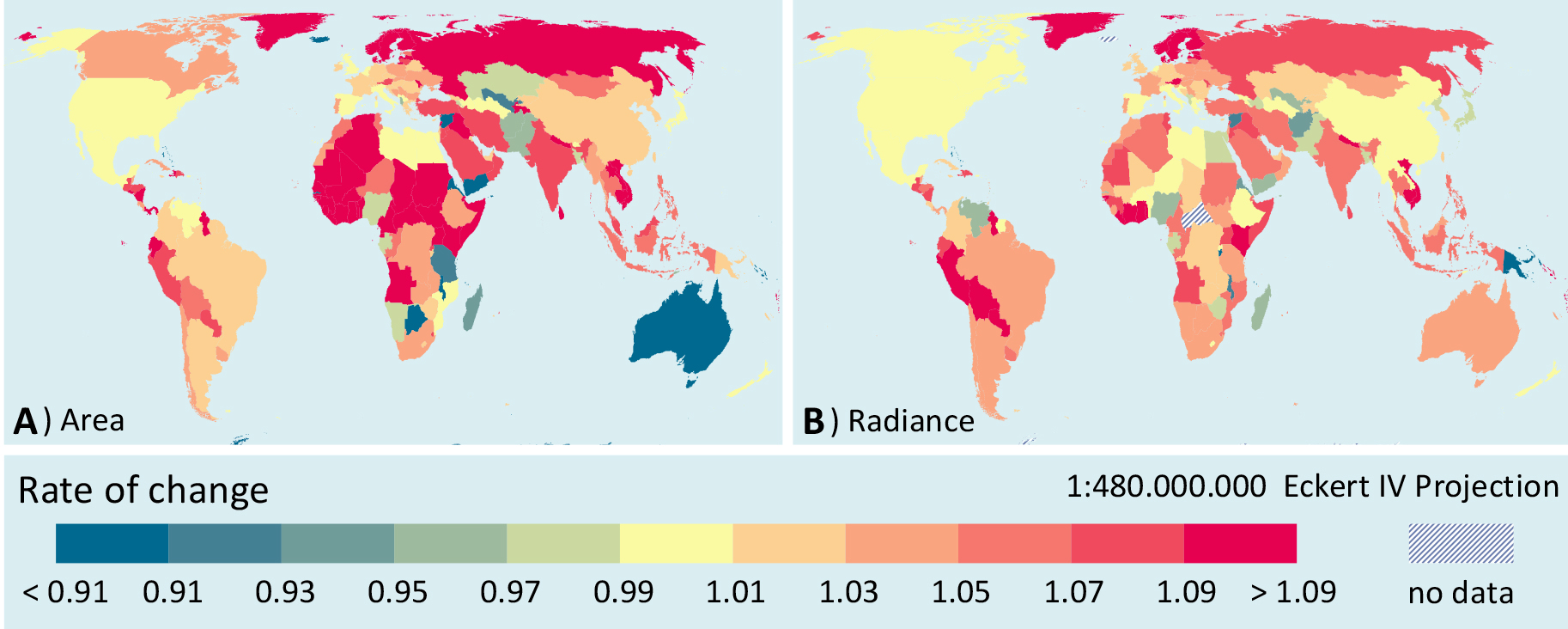Artificially lit surfaces on Earth increase more than 2% per year
Light pollution, produced mainly by excessive night lighting or incorrect lighting, is an energy waste that endangers human health and ecosystems. Between 2012 and 2016 artificial night lighting has increased by 9.1%, despite the use of more efficient lighting systems
Concerns about light pollution arose in the astronomical field as a consequence of its adverse effects on astronomical observations, but in the last decade there has been a proliferation of studies connecting the excess of nocturnal lighting to health hazards and damage to ecosystems which, compounded with the waste of energy, firmly establish the need to regulate nocturnal lighting.Today, a long-term study revealing a clear increase in globally illuminated surfaces is published in Science Advances.
This increase, of 2.2% per year in both length and intensity, takes place at a time of transition to LED lighting systems, more capable of reducing emission to space and its intensity on demand. "LEDs are not yet helping to globally reduce light pollution and may be helping to increase it", says Alejandro Sánchez de Miguel, a researcher at the Institute of Astrophysics of Andalusia (IAA-CSIC) who participates in the research.

This rebound effect has historical antecedents, in which the increase of the efficiency in the illumination and the reduction of its cost generate an increase of the consumption instead of a descent (dark regions are illuminated or the lighting is programmed from the dusk). The constant increase in nighttime lighting has caused half of Europe and a quarter of North America to suffer a generalized "night loss", with the consequent modification of the day and night cycles.
The results of the study show an unequivocal increase in lighting in South America, Asia and Africa, the decline in certain regions, including those suffering armed conflicts, such as Syria or Yemen, and stagnation in countries such as the United States, Italy or Spain, the most lightened worldwide.
"In the case of Spain, we have seen that light pollution has stabilized since 2012, but we have observed that in some large cities, like Madrid, the satellite receives less signal, but this is due to a limitation to detect blue light, which is intrinsically more polluting -it is almost similar to what we see in Milan, but less pronounced. We need to exploit the possibilities of the images taken by the astronauts of the International Space Station to measure the true impact, but the current data are enough to see that globally we are getting worse", explains Alejandro Sánchez de Miguel (IAA-CSIC).

In the medium term, it seems that artificial lighting will continue to rise, eroding regions of the Earth that still experience natural cycles of day and night. A worrisome fact, because light pollution threatens 30% of vertebrates and 60% of nocturnal invertebrates, has effects on fauna, flora and microorganisms and more and more studies point out their impact on human health.
"It is proven that greater energy efficiency does not produce lower global energy consumption: to achieve the latter, we need to control emissions as it is done with carbon dioxide emissions, and we must develop lighting policies that address the problem of light pollution and intensify the use of efficient systems: well used, amber LEDs could be the solution to the problem", says Sanchez de Miguel (IAA-CSIC).
C. C. M. Kyba et al. "Artificially lit surface of Earth at night increasing in radiance and extent". Science Advances, 22 de marzo 2017.
Instituto de Astrofísica de Andalucía (IAA-CSIC)
Unidad de Divulgación y Comunicación
Silbia López de Lacalle - sll[arroba]iaa.es - 958230532
http://www.iaa.es
http://www-divulgacion.iaa.es

